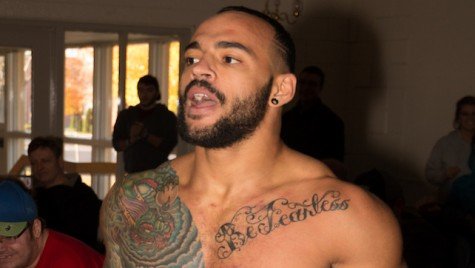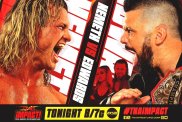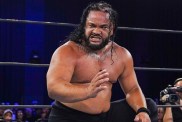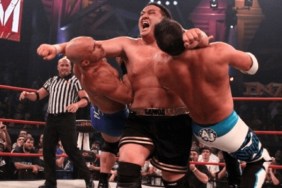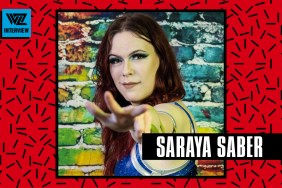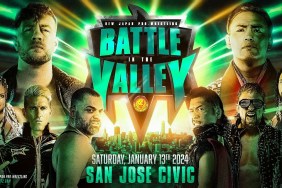My Friday column for the Pittsburgh Tribune-Review looks at the controversy around the Ricochet Vs Will Ospreay match and what’s hurting pro-wrestling. Here’s a sample:
The responses to a recent match in Japan illustrate clashing that’s at an all-time high among professional wrestling styles and audiences.
Ricochet took on Will Ospreay in a tournament for New Japan Pro Wrestling. This match prompted legendary veteran Vader to comment on his official Twitter account in a fury of tweets and conversations with critiques. Among many things, he called the match a “memorized gymnastics routine” and “I’m all for wrestling evolving as long as it stays consistent with someone winning and someone losing, Tell that story. Demonstrate that.”
Since then, the wrestling world has been debating the match and what helps or hurts the industry.
Two points right off the bat are automatic for me. First, Vader is a proven legend in the business. He’s made money as a top performer in the United States and Japan. Vader’s opinion is worth hearing on this subject, even if you disagree with it.
Second, Ricochet and Ospreay are incredible athletes. No critique about this match should lose sight of how physically gifted both performers are.
The match Ricochet and Ospreay put on was the best match you can have for an audience at that show. It was the NJPW “Best of Super Juniors Night 6” event. It’s the type of match people paying for that event wanted to see. They got their money’s worth.
Professional wrestling is about telling a story. This match told a story. Out of the gate, both showed they are worthy of being in the ring with each other. A series of counters, blocks and mirroring each others’ skill sets kept the audience roaring with applause at the end of every sequence. Ricochet showed points of being stronger and savvy to get one up on his opponent. Ospreay started to battle back and ultimately pulled out his best combinations, and even Ricochet couldn’t stop giving Ospreay the victory.
There is a time and place for this match, and this was it. It was the final match of the night in a tournament showcasing this type of acrobatic, fast-paced style.
If this match takes place at the wrong time and place it makes everything else null and void.
Wrong place and wrong time can be if it was the first of a long feud featuring several matches between the two. If you start the feud with this type of delivery in the ring, you’ve given it all to the audience too early. The fact this was a meeting of chance due to the tournament bracket works for these two pulling out all the stops to advance.
Another wrong place would be a show not designed around this style. If this match is on a show with more traditional style pro wrestling matches, it makes it tougher for those other matches to succeed and be taken seriously.
Too often I feel people today are quick to label traditional pro wrestling as “slow.” Some traditional matches can have a slower pace, but it’s not exclusive to all. A lot of Hulk Hogan matches were slower as it built to him “hulking up” and winning. However, other matches such as Ric Flair’s classic battles were nearly hour-long roller coaster rides of emotion.
The “traditional” style matches have the common thread of telling a story of these characters and their conflicts via physicality in the ring.
Ricochet versus Ospreay told a story best suited for their audience. I admit though that their match and other matches have a higher rate at putting the valuable art of selling at risk.
The art of selling is a major foundation on which pro wrestling is built. The match results are predetermined, but they have to make the audience believe in the physicality taking place. They have to sell the consequence and aftermath of each move.
The moment you stop selling is the moment everything becomes a trampoline exhibition of gymnastics. The art of selling is the glue holding all of the movement together to tell the story.
Ricochet and Ospreay did sell, quite well, at points of the match. On the flip side, there were also points of the match where suspension of disbelief was higher than normal.
The biggest example is in the 14-minute mark when Ricochet drops Ospreay on his neck with a Death Valley Driver on the apron and Ospreay instantly pops up and head scissors Ricochet to the floor. Now, they end up selling and laying on the floor before almost being counted out. But are we supposed to believe that Death Valley Driver actually meant anything if Ospreay was able to get off one spectacular counter immediately before selling the effects of it?
They sold and it worked in the context of this match and show. But what angers some of their peers, especially some veterans who come from generations before, is that this can be perceived as harmful to others who don’t work this style. If you watch this match and then watch another match that has a Death Valley Driver, the credibility of that move and the performer is potentially gone.
CLICK HERE for how it’s hurt guys like Roman Reigns or John Cena and the moral of the story.
